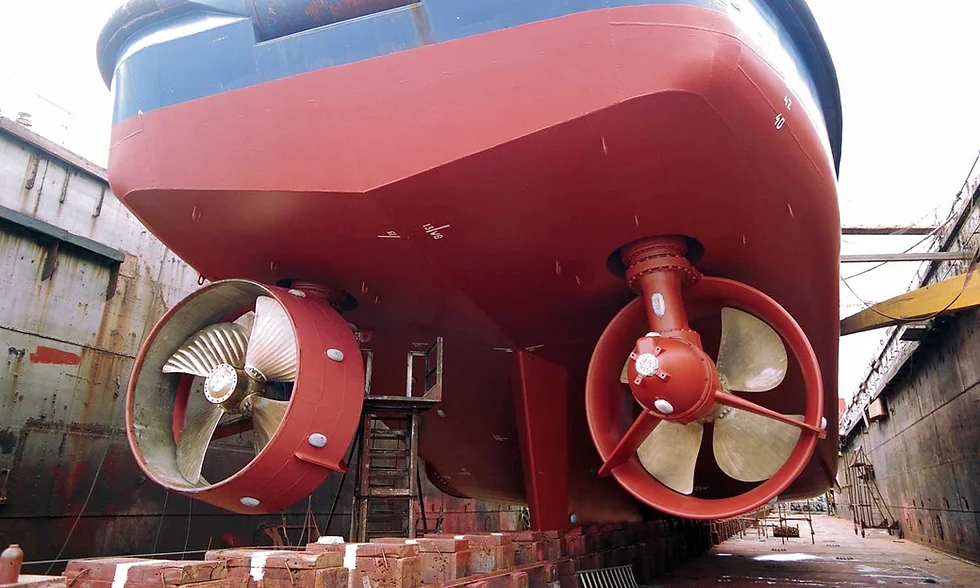An azimuth thruster, commonly referred to as a rudder propeller, is a propulsion system designed for marine applications, providing enhanced maneuverability and control for various types of vessels. This innovative propulsion technology has become increasingly popular in modern ship design, allowing ships to navigate more efficiently in restricted or congested waterways.

Azimuthing Capability:
The defining feature of the azimuth thruster is its ability to rotate the propulsion unit horizontally. This enables it to direct the thrust in any desired direction, offering 360-degree maneuverability. This differs from traditional propulsion systems that require steering the entire vessel to change direction. The azimuth thruster allows for precise and rapid changes in heading. This makes it especially valuable for dynamic positioning, docking, and navigating tight spaces.
Thruster Controls:
Azimuth thrusters are controlled by advanced electrical systems that manage the rotation and thrust of the propulsion unit. This allows for highly responsive and accurate control, enhancing the safety and efficiency of vessel operations.
Types of Azimuth Thrusters:
- Z-Drive: The azimuth thruster is located at the bow or stern, providing forward and backward thrust.
- L-Drive: There is a prime mover on the top of the azimuth thruster. It offers improved lateral thrust for increased maneuverability during port operations.
Advantages:
- Maneuverability: Azimuth thrusters excel in providing superior maneuverability, enabling vessels to navigate crowded harbors, narrow channels, and challenging water conditions with precision.
- Dynamic Positioning: The ability to independently control the direction of thrust makes azimuth thrusters ideal for vessels requiring dynamic positioning, such as offshore support vessels, research ships, and drilling platforms.
- Improved Efficiency: Azimuth thrusters contribute to increased fuel efficiency by optimizing vessel handling and reducing the need for tug assistance during docking and undocking.
- Reduced Environmental Impact: The precise control offered by azimuth thrusters minimizes the risk of collisions, reducing the environmental impact of shipping accidents.
Applications:
Azimuth thrusters find applications in various types of vessels, including but not limited to:
- Cruise ships
- Container vessels
- Offshore support vessels
- Icebreakers
- Ferries
- Research vessels
In conclusion, the azimuth thruster, or rudder propeller, represents a technological advancement in marine propulsion systems, enhancing the maneuverability, efficiency, and safety of diverse maritime operations. Its widespread adoption reflects its contribution to modernizing the shipping industry and meeting the demands of evolving marine transportation requirements.
